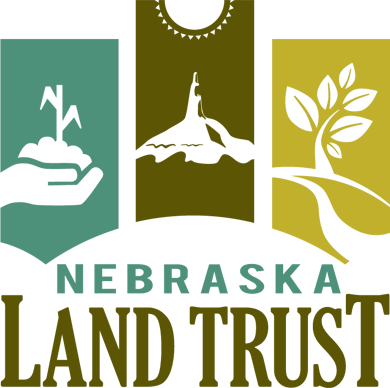Horseshoe Bar Ranch
Thomas County
Nebraska Land Trust partnered with Brent and Janet Steffen to conserve their nearly 6,000 acre ranch in Thomas County in March of 2023. This sandhills ranch, also known as “H-Bar Ranch”, was originally homesteaded by a friend of Buffalo Bill and is featured in the book “The Horseshoe Bar Ranch” by Roe Black.
With 4 miles of frontage on the Dismal River, this ranch was at high-risk of being developed into cabin sites. It is our second largest easement to date, and it also adjoins another easement which has created a contiguous 10,000 acres of protection.
The following is a feature on H-Bar Ranch that was published to the Land Trust Alliance national blog “The Dirt“.
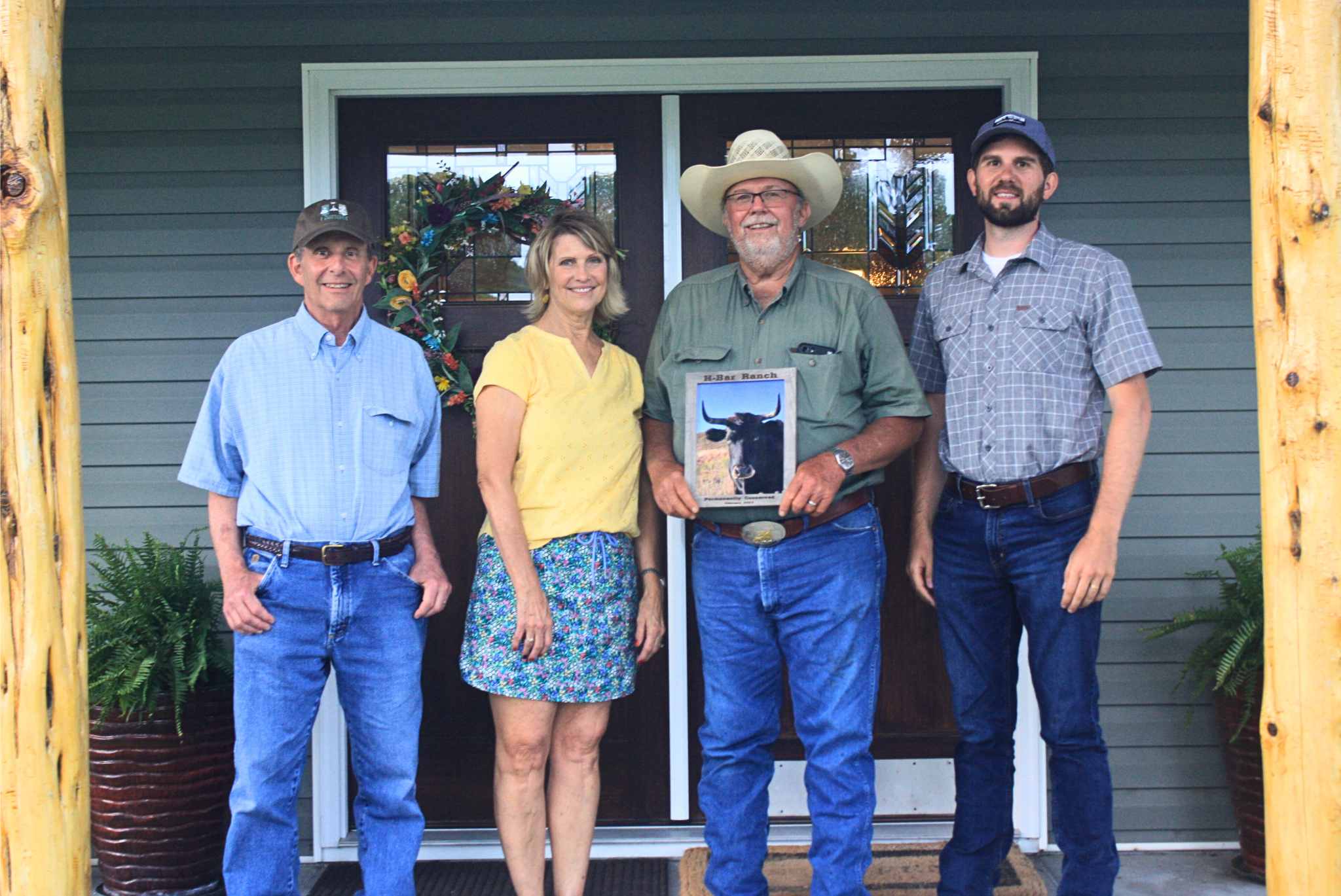
(L-R) Dave Sands, Janet Steffen, Brent Steffen and Jacob Alishouse
Nebraska’s sandhills provide a unique conservation opportunity for Nebraska Land Trust
Hannah Sidel | Nebraska Land Trust | August 15, 2023
The sandhills of Northcentral Nebraska. Many have never heard of them, despite being the most intact temperate prairie ecosystem in the world. Comprised of nearly 20,000 square miles of sand dunes stabilized by native prairie, it’s one of the largest intact grasslands in North America. It’s immensely ecologically diverse. Nearly 700 plant species, 300 bird species and more than 55 species of mammals call the sandhills home.
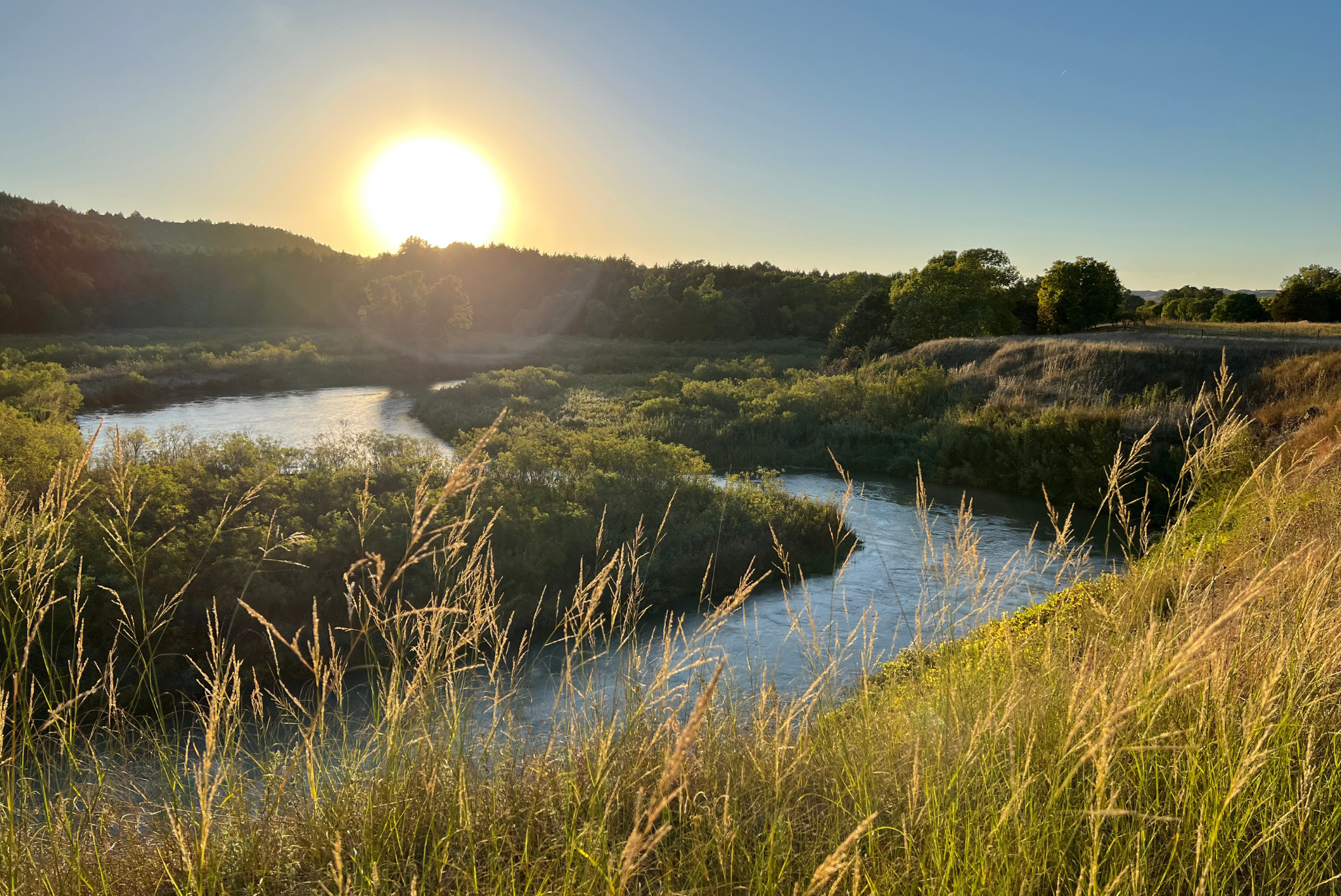
Nestled in the heart of the sandhills is the Horseshoe-Bar Ranch, also known as “H-Bar Ranch.” This ranch has historic origins, being initially homesteaded by a friend of Buffalo Bill. The ranch is also the subject of a book titled “The Horseshoe Bar Ranch: Remembering a Prairie Childhood.” With 4 miles of frontage on the Dismal River, the property spans nearly 6,000 acres. Despite its name, the Dismal River offers some of the most beautiful scenery in the state — it’s what drew in H-Bar Ranch owners Brent and Janet Steffen.
“It’s our little piece of heaven,” said Brent. “It’s not heaven, but it’s in the same zip code. Dismal River country is pretty special. The Dismal River is probably the most misnamed river in the country.”
Brent and Janet knew they weren’t the only ones who appreciated the beauty and scenic views on their ranch. There is an increasing trend for buyers to purchase parcels of ranches and turn them into “ranchettes” or even golf courses. These subdivisions carve up the land into small pieces that are no longer viable for ranching. Once divided, it will never be a working ranch again. This is why the Steffens chose to work with Nebraska Land Trust to conserve their ranch through a conservation easement. They wanted to be sure their ranch would remain a working ranch — forever.
The environmental benefits of keeping grasslands in working agriculture, like the H-Bar Ranch, are numerous and substantial.
For one, the sandhills sit atop the Ogallala Aquifer, one of the largest aquifers in the world. It supplies drinking water to many in the Great Plains states as well as for agricultural uses such as irrigation. The grasses above the aquifer help to capture and filter the water before it descends into the permeable rock layers below.
And although we often think of forests sequestering carbon, grasslands sequester carbon too. While grasses don’t store the same volume of carbon as trees, the carbon is stored in the biomass underground, which protects the carbon stores in the event of fire.
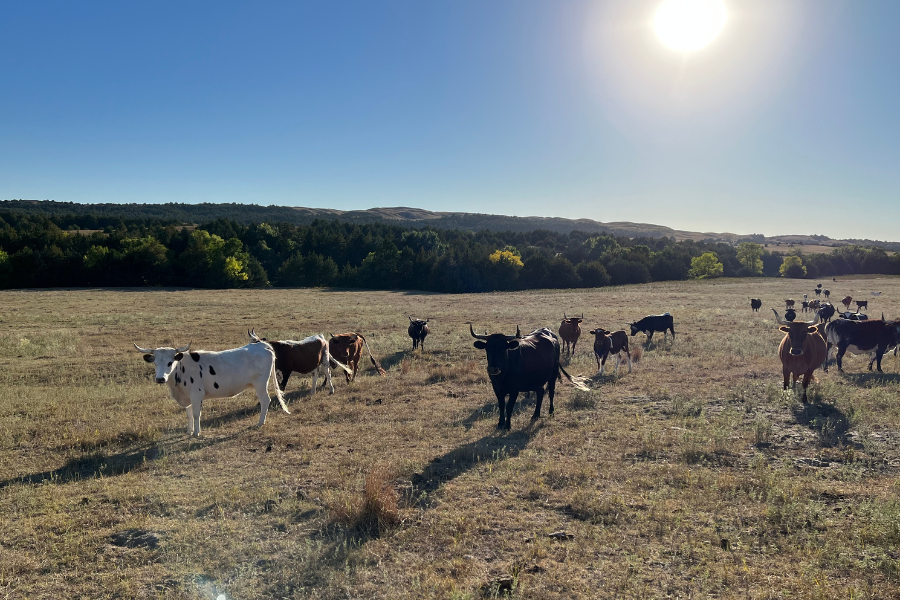
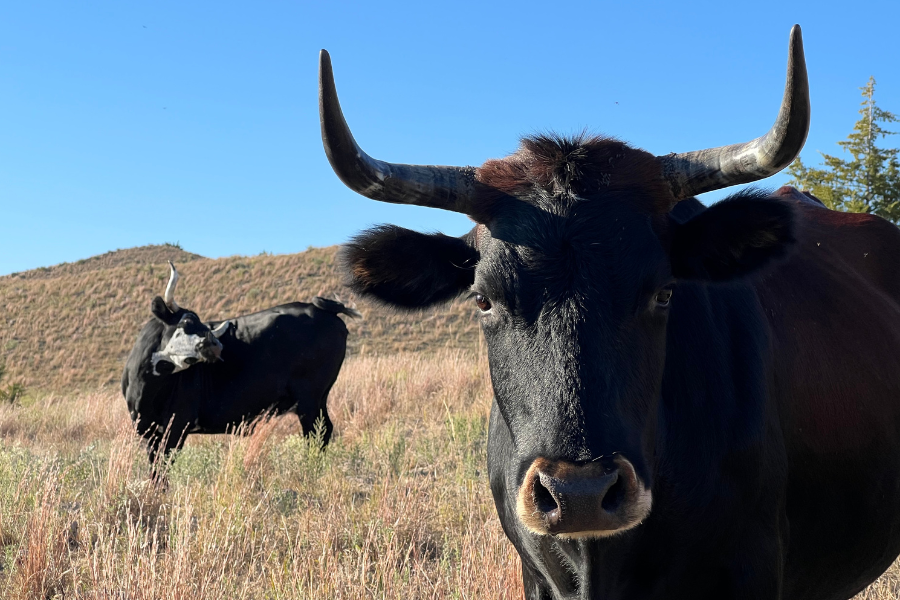
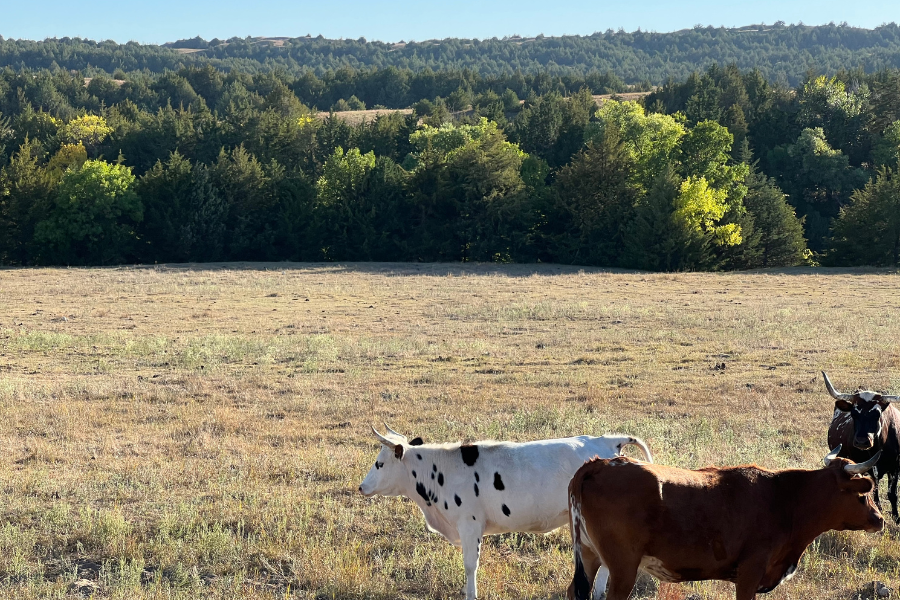
The easement will also help maintain the impressive ecological diversity on the ranch. Unlike most of Nebraska Land Trust’s easements, this easement contains a cedar management plan. It’s important to remove cedars in this area, as they spread quickly and can rapidly turn native grasslands into cedar forests. With the proceeds from the easement purchase, the Steffens were able to implement more efficient methods of cedar tree removal, thereby maintaining native grasslands thereby preserving the ecological diversity on the ranch.
Perpetuity is a word that gives most people pause. It should. The decision to determine the future of your land forever is both significant and deeply personal. At Nebraska Land Trust, the advice given to landowners is to always take their time, consult with their family and NEVER pursue an agricultural land easement solely for financial benefit.
“Our major objective entering into this conservation easement was that we didn’t want to see it developed,” said Brent. “We wanted it to stay as close to how God made it as it could be. And we wanted it to stay in agriculture.”
The private landowners that land trusts work with belong to a remarkably small cohort in our world. An incredibly small percentage of people in the global population own land. Of those in the world who own land, an exceedingly small percentage of those choose to conserve it through an easement. This means land trusts working with private landowners have the pleasure of working with a wonderfully unique and visionary group of people. NLT has served 47 families who wish to conserve their land in perpetuity.
Land conservation is far from free. Nebraska Land Trust relies on the ALE (Agricultural Land Easement) program through the U.S. Department of Agriculture’s Natural Resources Conservation Service to fund many of its easements. The ALE grassland program funded a large portion of the H-Bar Ranch easement. ALE is a Farm Bill program that provides funding for cropland and grassland easements and paid 75% of the value of the easement directly to the Steffens, who then donated the remaining 25% of the easement’s value.
Landowners also agree to give a stewardship endowment donation to the land trust. Since Nebraska Land Trust is promising to enforce the easement forever, these donations are a vital resource for staff to monitor and enforce these easements in perpetuity. While most of the easement is funded by ALE, the landowners are making a significant personal investment as well.
Nebraska Land Trust has conserved nearly 48,000 acres to date. 26,815 of these acres were conserved using funding from the Agricultural Conservation Easement Program, or ACEP. This funding is an integral part of Nebraska Land Trust’s ability to help farmers and producers reach their goals for their farms and ranches, and NRCS has been NLT’s most valuable partner in conserving these properties. NLT takes great pride in the number of acres it’s conserved. However, the greatest accomplishments and measure of success lie in the number of families, like the Steffens, that they’ve helped achieve their vision for the future of their land.
